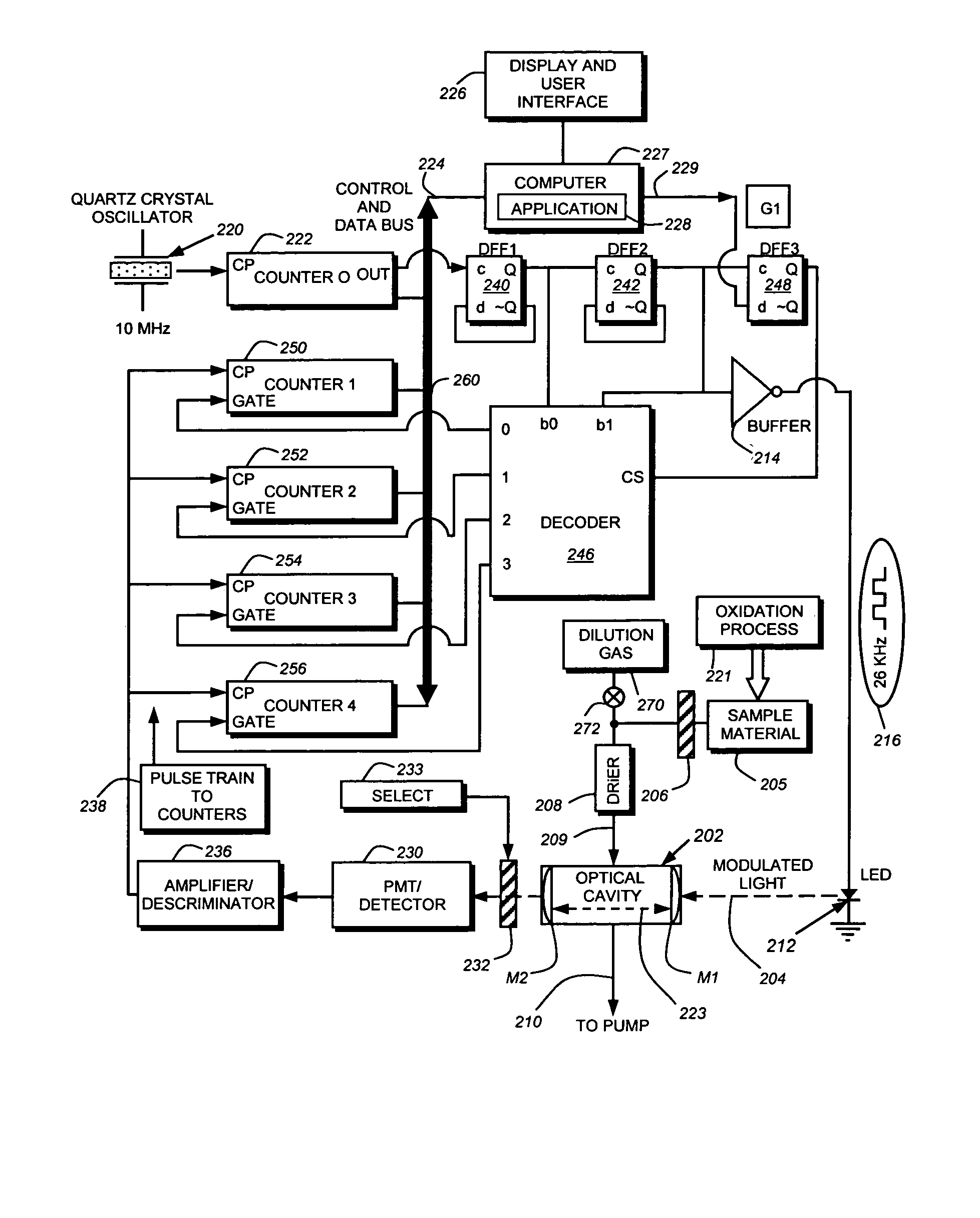System and method for trace species detection using cavity attenuated phase shift spectroscopy with an incoherent light source
a phase shift spectroscopy and incoherent light source technology, applied in the field of trace chemical species detection, can solve the problems of reducing visibility due to secondary aerosol formation, photochemical “smog” formation, and prone to interference by other nitrogen/oxygen-containing atmospheric trace species, and achieves high light output of led and maximizes coupling
- Summary
- Abstract
- Description
- Claims
- Application Information
AI Technical Summary
Benefits of technology
Problems solved by technology
Method used
Image
Examples
Embodiment Construction
[0021]FIG. 2 details a system 200 for detecting predetermined chemical species of a gaseous compound using a sample cavity 202 through which a modulated incoherent light 204 is passed and from which leaked light is analyzed for appropriate phase shift according to an illustrative embodiment of this invention. The sample is derived from an inlet that may communicate with the ambient environment, a sample container (or chemical-containing swab / strip) over which inert gas is passed or any other flowing gas source. In this embodiment, the gaseous sample material 205 is passed through a microparticulate filter 206 and moisture drier 208 of conventional design and whence into the cavity 202 via an inlet 209. An outlet 210 connected to a pump (not shown) may be used to draw gas at an appropriate flow rate through the cavity. It is noted that a variety of species can be detected in accordance with the teachings of this invention. In the example of FIG. 2, the detection of nitrogen dioxide (...
PUM
| Property | Measurement | Unit |
|---|---|---|
| path length | aaaaa | aaaaa |
| path length | aaaaa | aaaaa |
| wavelength | aaaaa | aaaaa |
Abstract
Description
Claims
Application Information
 Login to View More
Login to View More - R&D
- Intellectual Property
- Life Sciences
- Materials
- Tech Scout
- Unparalleled Data Quality
- Higher Quality Content
- 60% Fewer Hallucinations
Browse by: Latest US Patents, China's latest patents, Technical Efficacy Thesaurus, Application Domain, Technology Topic, Popular Technical Reports.
© 2025 PatSnap. All rights reserved.Legal|Privacy policy|Modern Slavery Act Transparency Statement|Sitemap|About US| Contact US: help@patsnap.com



